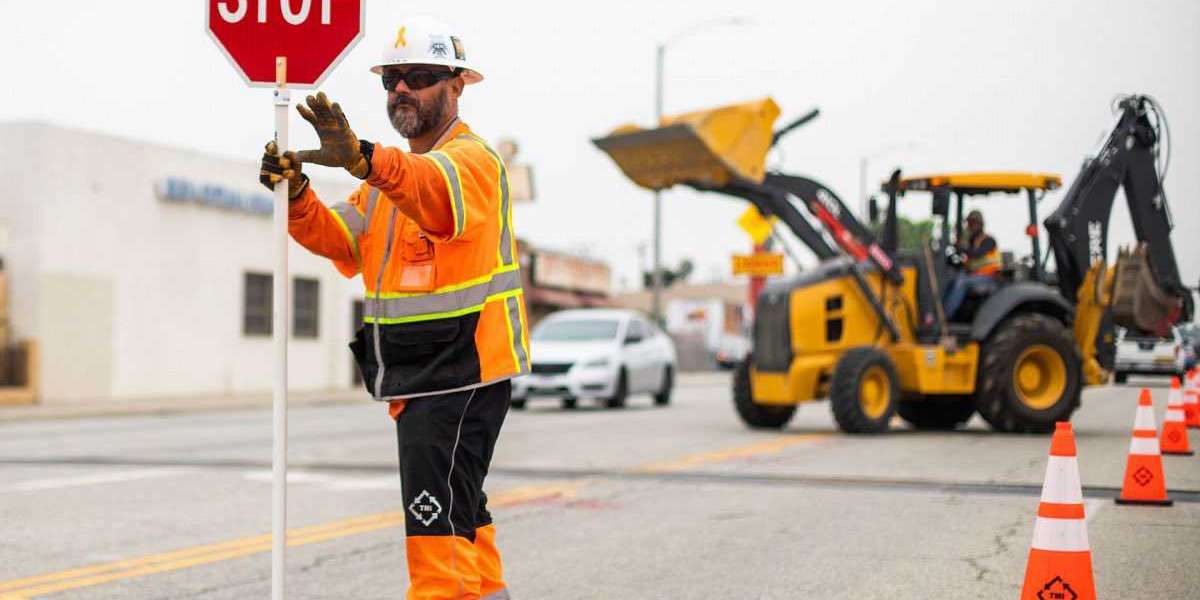Unveiling the Importance of Traffic Control Flagging Services in California
In the bustling state of California, where highways stretch like veins across a diverse landscape, ensuring road safety and efficient traffic management is a top priority. Amidst the dynamic environment of construction projects, road repairs, and events, Traffic Control Flagging Services play a pivotal role. These services serve as the unsung heroes, orchestrating the delicate ballet of vehicles, pedestrians, and construction equipment. We delve into the world of Traffic Control Flagging Services in California, understanding their significance in fostering a safer and smoother transportation system.
The Crucial Role of Traffic Control Flagging Services
- Safety First: Protecting Lives and Properties: In the realm of road construction and maintenance, safety is paramount. Traffic Control Flaggers, armed with their distinct orange flags and reflective gear, act as guardians of safety. They guide motorists and pedestrians through detours, lane closures, and work zones, ensuring that all parties involved remain unharmed.
- Efficient Traffic Management: California's roadways can witness heavy congestion, especially in urban areas. Traffic Control Flaggers use their expertise to regulate traffic flow, preventing gridlocks and ensuring a steady movement of vehicles. Their strategic positioning and communication skills allow for the optimization of traffic routes, minimizing delays for commuters.
The Skill Set of Traffic Control Flaggers
- Comprehensive Training: Traffic Control Flaggers undergo rigorous training to master the art of traffic control. From understanding different road signs to effective communication techniques, they are well-equipped to manage even the most challenging scenarios.
- Effective Communication: Communication lies at the heart of a flagger's role. They use hand signals, flags, and two-way radios to convey instructions to drivers and construction crews. Clear and concise communication is essential for preventing accidents and maintaining order.
Applications of Traffic Control Flagging Services
- Construction Projects: Construction sites are dynamic environments with heavy machinery, uneven surfaces, and limited visibility. Traffic Control Flaggers ensure the safe movement of construction vehicles while also directing regular traffic around the site.
- Road Maintenance and Repairs: Whether it's resurfacing roads or repairing bridges, these activities often require lane closures or deviations. Flaggers guide motorists through alternative routes, reducing confusion and preventing congestion.
- Special Events: From parades to marathons, California hosts numerous events that can disrupt regular traffic flow. Traffic Control Flaggers manage the temporary changes in traffic patterns, allowing events to take place without causing chaos on the roads.
Benefits for Construction Projects
- Reduced Accidents: By maintaining organized traffic flow and alerting drivers to changing road conditions, flaggers significantly reduce the risk of accidents within construction zones.
- Timely Project Completion: Efficient traffic management ensures that construction projects progress smoothly, avoiding unnecessary delays caused by traffic congestion.
- Enhanced Public Perception: Implementing flagging services demonstrates a commitment to safety and a proactive approach to minimizing inconvenience for the public.
Regulations and Standards
California Department of Transportation (Caltrans) sets stringent regulations and standards for Traffic Control Flagging Services. These guidelines cover everything from proper attire and equipment for flaggers to the appropriate signage and signals for different situations.
Looking Ahead: The Future of Traffic Control
As technology continues to advance, the field of traffic control is also evolving. Automated traffic control systems and smart infrastructure are becoming more prevalent. However, the human element provided by Traffic Control Flaggers remains invaluable. Their ability to adapt to unexpected situations, provide real-time instructions, and ensure empathy in their interactions is something that technology cannot replicate entirely.
Conclusion
In the sprawling state of California, where the rhythm of life often moves at a rapid pace, the unsung heroes of Traffic Control Flagging Services maintain harmony amidst chaos. Through their dedication, training, and tireless efforts, they weave together the threads of road safety, efficient traffic management, and seamless construction projects. These flaggers stand as a testament to the commitment to safeguarding lives and propelling California toward a safer and smoother transportation system.








